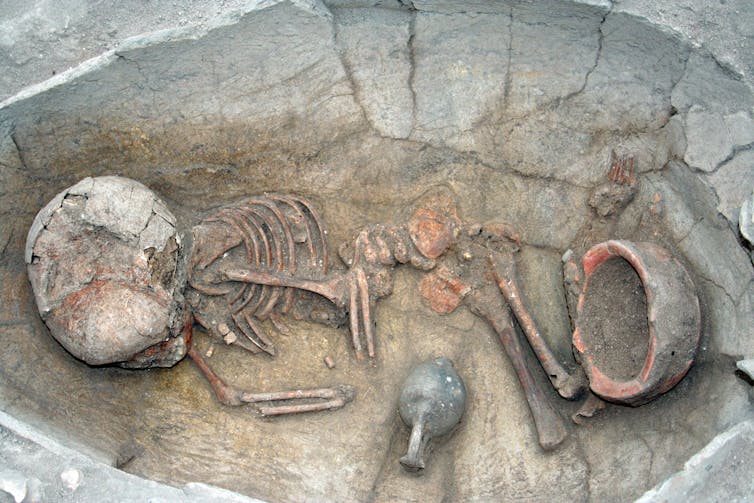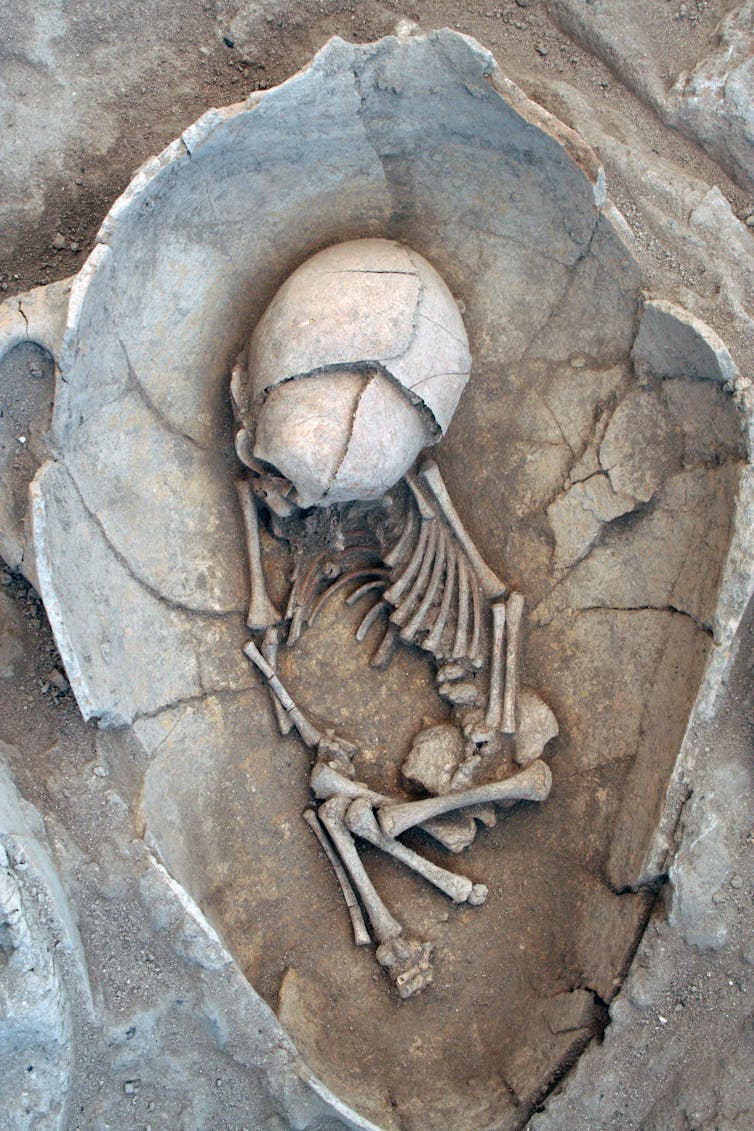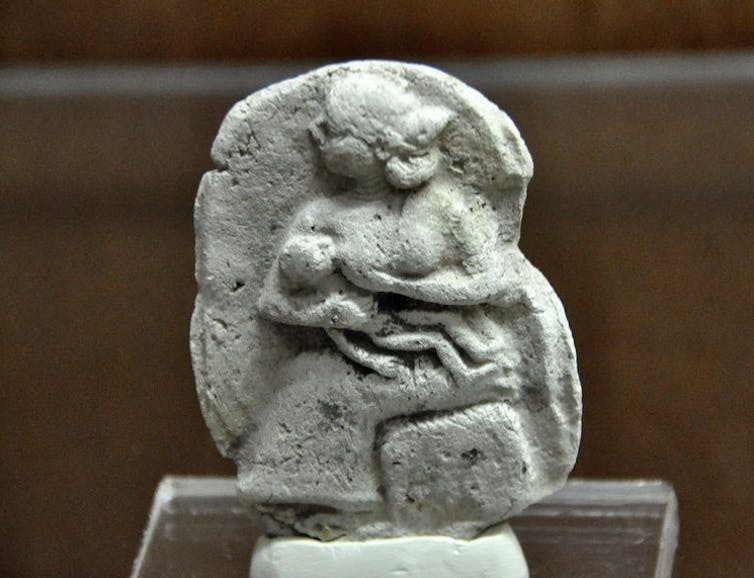How breastfeeding sparked population growth in ancient cities

,
Historians down the ages have examined the ebb and flow of populations in ancient societies. But most of these examinations have tended to focus on male dominated events – the wars, the politics and the money. But there is another side to the past that struggles to be heard over the clashing of swords. It is this unreported history that our new research focuses on.
My colleagues and I at ÃÛÌÒAV and the University of Warsaw used advanced chemical techniques in some of the world’s early cities in ancient parts of Syria and Lebanon. We analysed small pieces of bone from infants, children and mothers interred in ancient Bronze Age cemeteries between 2800 and 1200 BC by using a technique known as . From this we built computer models that estimated the age of weaning (the introduction of complementary foods to a breastfeeding child’s diet) and complete weaning (stopping breastfeeding entirely) in these populations.
Our research found that women seem to have exclusively breastfed their children until about the age of six months and completely stopped around the age of two and a half – earlier than was common elsewhere at this point in history. These earlier weaning times may have helped boost the , which became flourishing centres of civilisation.
Read more:
The sites we excavated were urban centres on the Mediterranean coast, and between the Tigris and Euphrates Rivers in what was called Mesopotamia. Children’s bones found by archaeologists are often more fragile than those of adults, as they are smaller and not completely mineralised (their bones have less inorganic material such as calcium than those of adults). This means they often get damaged or are lost through decomposition.
However, enough children were excavated at these cemeteries for chemical analysis and confident statistical modelling. That’s partially due to the ancient Near Eastern practice of burying infants and children in jars, which partially protected the bones from the burial environment.

Read more:
Our ancient sites were metropolitan hubs and probably had wide-ranging contact from people all over the ancient world. Within these cities, women seem to have exclusively breastfed their children until about the age of six months, which fits with the for healthy infant feeding.
While other foods seem to have been introduced after six months, complete weaning stopped around the age of two-and-a-half. And these times seem to fit with written records from that part of the world. For example, there are some Babylonian contracts dating to as early as 1000 BC between parents and a wet nurse (a woman who would breastfeed the baby as if it were her own). According to these contracts, the wet nurse would breastfeed the baby for a proscribed amount of time, often around two to three years, and be repaid in barley, oil, wool .
Later religious texts also provide clues. Some books in the Bible (Maccabees and Chronicles) note breastfeeding lasting for three years, and later sources from the first millennium AD such as the Quran and the Babylonian Talmud estimate this period as two years.

Breastfeeding on average for two and a half years might seem like a long time in most modern cultures but it’s shorter than in many ancient societies as revealed by archaeological studies also using stable isotopes analysis to estimate infant feeding practices. These found that the global average length of time until initial weaning in in pre-industrial societies would have been one year (as opposed to six months in our ancient cities). And complete weaning occurred at around the age of three.
Breastfeeding and populations
The timing and nature of weaning and complete weaning have long-lasting health impacts . But beyond their impact on the health of individuals, breastfeeding and infant feeding strategies also affect population structures.
Breastfeeding for longer tends to mean women have gaps between pregnancies, and this has been considered a major factor in controlling fertility where breastfeeding up to and beyond the age of five was the norm. In contrast, earlier weaning is early farming communities with higher population growth.
This means the shorter breastfeeding times shown by our findings may have helped boost the population of the cities of ancient Syria and Lebanon. It could have been the result of having access to cereal crops such as wheat and barley and dairy products such as yogurt, which could easily be fed to children as weaning supplements. Agriculture was in this part of the world than elsewhere and coincided with the emergence of urban civilisations and the establishment of wide reaching international networks.
Sidon, for example, grew into one of the Mediterranean’s great port cities, connecting the Phoenicians as a commercial power. And our research suggests the strategies they used for childrearing may have had a hand in their achievements. So breastfeeding and weaning in ancient Lebanon and Syria didn’t make it into the big historical texts. But our study shows that these seemingly modern issues had big impact on society.
![]()
, Postdoc in Archaeology and Anthropology,
This article is republished from under a Creative Commons license. Read the .



